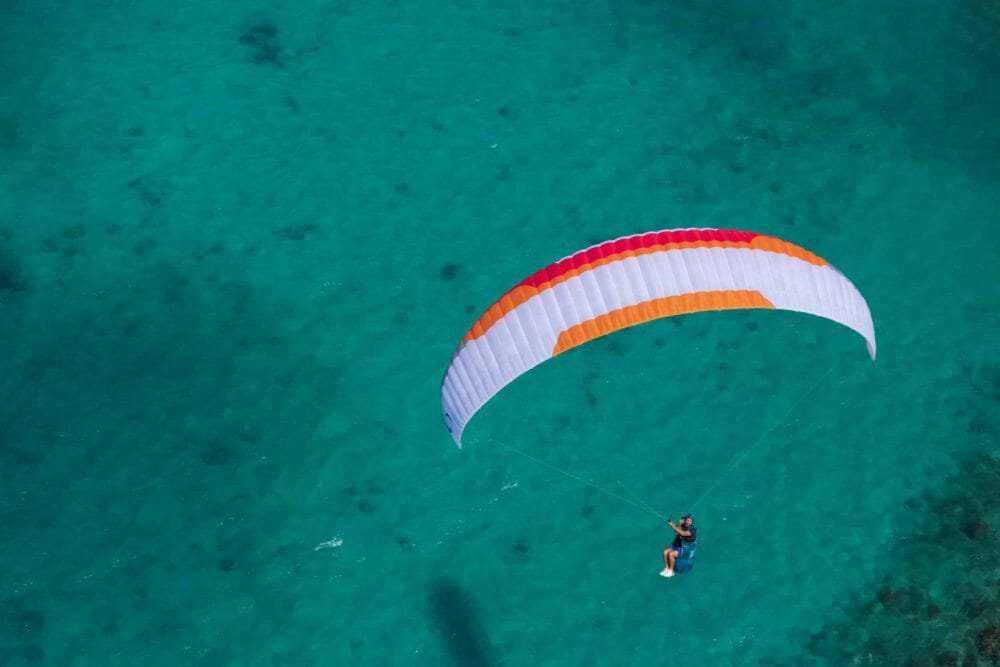No products in the cart.

The Ultimate Checklist Before Visiting A New Site
New Terrain Can Be So Exciting!
There’s nothing quite like the feeling when your paraglider wing lifts off into fresh air that you’ve never explored before. The sensation of gliding through the sky with only a few meters to spare between yourself and the ground is an experience truly unlike any other.
This extreme sport can take you to places you never thought existed! You can soar through mountain passes, glide above deep valleys, and traverse different terrains – all while taking in spectacular views!
It may be a short trip from home, or to a far away exotic mountain range but discovering flight paths is part of the reason many of us got into flying. With its ever-growing popularity, paragliders are now finding many new flight paths in order to explore further heights and destinations!
However, unchartered territory comes with unseen risks that must be considered before you venture out into the sky on your paraglider. Some of these risks include:
- Peculiar terrain and weather conditions
- Large numbers of low-hour or student pilots
- Difficulty in finding trusted information on the area
It is important to remember that these are some very real dangers of exploring new terrain when paragliding. From unpredictable weather conditions to dangerous landings, these can come with immense risks should never be taken lightly.
The most common danger associated with paragliding in new terrain is the potential for unpredictable weather patterns. Even if forecasts look good at takeoff, conditions can quickly change during flight due to changes in wind speed or direction, temperature shifts, incoming storms systems and more. Understanding your skill level, and being prepared to adapt to sudden shifts or changes mid flight is important. Do you need some extra help reading the sky and understanding weather risks? The book PARAGLIDING BOOK UNDERSTANDING THE SKY, is a great resource and learning tool for paragliders looking to learn more in this area!
Having the proper equipment like your reserve parachute handy (and packed appropriately) can be one of the most important safety measures. This could be the difference between a safe landing or a deadly one.
Remember, even the briefest of changes can lead to extremely hazardous scenarios and pilots must be prepared for any sudden shifts in the weather while they are airborne.
Checking your launch area, as well as your landing areas (or potential landing spots in an emergency) is also very important in mitigating your risk before your new flight! Some sites can be relatively busy – offering multiple launch areas across multiple ridgelines with many hidden dangers and an established LZ. The more people, the more variables you may encounter. Be mindful of others in your vicinity before you launch yourself into your flight!
Another risk associated with exploring new terrain when paragliding is finding yourself unprepared for a hazardous landing site. Pilots that don’t investigate the terrain generated conditions, potential hazardous landing sites, or site protocols before strapping their paragliding helmet on can put multiple people in harm’s way.
“If we do our homework correctly, however, these dangers are easily avoidable as preparation can allow us to see the unseen.”
Our 6 Top Tips on the Steps to Take Before You Leave Home
Paragliding is an exciting, adrenaline-filled activity that can give you the thrill of a lifetime. However, it can also be dangerous if safety procedures are not taken seriously. Knowing how to stay safe while paragliding is key to ensuring you have a safe and enjoyable experience. Here are some top tips for staying safe as a paraglider so that you can enjoy your time in the sky with peace of mind:
- Visit the Club’s Website
Here you should find all of the club’s basic information such as radio frequencies or which waivers to sign. Some clubs are enforced by strict rules while others are not but all of this groundwork will save you time and frustration on-site.
- Read the Site Briefings
Most sites have briefings that they create for visiting pilots and it helps to absorb this information the day before a flight. Even have a look with Google Earth to get a feel for your surroundings.
- Start Forecasting Before
Whether you’re a powered paragliding fanatic or planning on tandem paragliding with a buddy, you’ll want to get a head start on predicting the weather. Be sure to check out historical trends and current forecasts for the day. Some sites have their local thermal, known turbulence, etc.. knowing that info can help to ovoid accidents.
- Check Out Forums and Chats
Many clubs have Facebook groups, telegram chats, and message boards with local pilots that are more than happy to help you out. They may even agree to meet up with you on the day of your flight!
- Get a Briefing In Person
This can be a difficult task to organize from afar, but if you can meet up with a local you’ll have trusted information on hand. Otherwise, just ask around on the LZ as you’re preparing to head up.
- Consider Going with a Friend or Mentor
It’s the most fun way to fly, and it always helps to know that somebody on the mountain has your back. Some pilots get very angry when you threaten their personal safety and shared experience can help to prevent these situations.
Our Final Two Cents
Remember to never take a flight day lightly. There are always risks associated with any flight, no matter the weather conditions. Take your time to research and prepare to mitigate risks pre-flight. Need some extra help gaining insight on the more challenging aspects of airspace? Take a course with a paragliding expert, or increase your knowledge with a resource like this book AIRSPACE & LAW FOR ULTRALIGHTS. It’s better to clear up common misconceptions to cement your understanding before you take to the skies.
Always take the time to conduct a thorough mental visualization of the flight before you try out a new site. There’s nothing wrong with reading up or taking your first descent in easier than normal conditions and never forget to help out someone new when you’re at home.
Have some questions? Feel free to get in contact with someone from our team! Whether you’re looking for some more advice, bits of gear, or paragliders for sale — our team is here to help!






